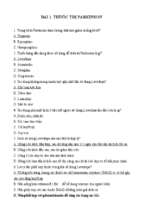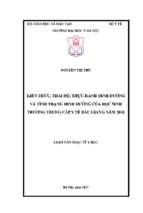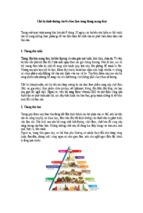INDIAN JOURNAL OF COMMUNITY HEALTH / / VOL 27 / SUPP 01 / JAN 2015
[Double Burden of…] | Kapil U et al
EDITORIAL
Double Burden of Nutritional Disorders amongst Adolescents and Strategies required
for combating it
Umesh Kapil1, Neha Sareen2
Department of Human Nutrition, All India Institute of Medical Sciences, New Delhi
Abstract
Introduction
Methodology
Results
Conclusion
References
Citation
Tables / Figures
Corresponding Author
Address for Correspondence: Dr. Umesh Kapil, Department of Human Nutrition, All India Institute of Medical
Sciences, New Delhi
E Mail ID:
[email protected]
Citation
Kapil U, Sareen N. Double Burden of Nutritional Disorders amongst Adolescents and Strategies required for
combating it. Indian J Comm Health. 2015;27, Suppl S1
Source of Funding : Nil Conflict of Interest: None declared
Article Cycle
Submission: 10/10/2014; Revision: 11/12/2014; Acceptance: 30/12/2014; Publication: 31/01/2015
Adolescents are the future generation of any country
and their nutritional needs are critical for the wellbeing of the society. In India, approximately 20% of
the population consists of adolescents (1). Presently,
the dietary inadequacy exists due to poverty and it is
the main cause of under-nutrition. However
simultaneously, we have affluent population groups,
which have high consumption of foods rich in fats
and calories, leading to over-nutrition and obesity.
Thus, India is facing double burden of Nutritional
disorders amongst adolescent in which we have
under-nutrition at one end of the socio-economic
spectrum and over-nutrition at the other (1).
Over-Nutrition amongst Adolescents
Over the last three decades there has been a
substantial change in the life style of adolescents in
the middle and high Income groups. With availability
of cooking gas, piped water supply and other labour
saving gadgets and universal presence of transport,
there has been a substantial reduction in physical
activity and energy expenditure. This is further
accompanied with physically passive behavior
amongst adolescent such as TV viewing, working or
playing games on a computer, talking on the
telephone, etc. This
passive behavior is often
accompanied with adverse dietary practices like
snacking/ consuming high fat or high sugar foods (2).
The scientific evidence from National Monitoring
Bureau (NNMB) repeat surveys do indicate that
there has been significant reduction in under-
nutrition along with simultaneous increase in obesity
and over nutrition in the past four decades (3).
Under Nutrition amongst Adolescents
Adolescent growth and development is closely linked
to the diet they consume during childhood and
adolescence. Adequate nutrition of any individual is
determined by two factors (4). The first is the
adequate availability of food in terms of quantity as
well as quality, which depends on socioeconomic
status, food practices, cultural traditions, and
allocation of the food. The second factor is the ability
to digest, absorb, and utilize the food. This ability can
be hampered by infection and by metabolic
disorders. The NNMB surveys has documented that
almost half of the adolescents of both sexes were not
getting even 70% of their daily requirements of
energy (3). The adolescent girls (AGs) of poor
communities need highest priority. Most of the AGs
are drop out of schools after the first few years of
schooling and are engaged in minor chores in their
houses helping their parents; and waiting for
menarche to arrive. Invariably thereafter, they are
‘trapped’ into marriage and start their reproductive
lives. These are the mothers-to-be, a crucial segment
of the population, who will not only usher in the next
generation, but also shape it. Today, most
adolescent girls of poor communities enter marriage,
totally unprepared for the task of motherhood and
child rearing. Adolescent girls, today, not being
reached by the health and welfare services as not
INDIAN JOURNAL OF COMMUNITY HEALTH / / VOL 27 / SUPP 01 / JAN 2015
being children, as not being pregnant, and as not
being old. The high rate of malnutrition in girls not
only contributes to increased morbidity and
mortality associated with pregnancy and delivery,
but also to increased risk of delivering low birthweight babies (1). This contributes to the
intergenerational cycle of malnutrition. On the basis
of world wide data, WHO had proposed that women
with height less than 145 cm and pre-conception
body weight less than 38 kg may be considered to fall
in the ‘high risk’ category, that is, likely to suffer
obstetric complications and to give birth to off-spring
of low birth-weight, especially in situations where
antenatal care and obstetric services are below par
(1, 5). According to the data gathered by the NNMB
in the country, 15 to 29 per cent of adult Indian
women in 10 states of India have body weight less
than 38 kg, and 12 to 25 per cent have height less
than 145 cm (3).
What can be done?
There is a lack of policies and programmes for
improving health and nutritional status of
adolescents in the country. Adolescent Health
should be addressed as a part of existing maternal
and child nutrition programmes. The health,
nutrition, education, social welfare, food and
agriculture, mass media, and the legal sector should
play the major role in integrating adolescent
nutrition in their activities (1).
Addressing the nutrition needs of adolescents could
be an important step towards breaking the vicious
cycle of intergenerational malnutrition, chronic
diseases and poverty (1). The main strategies
suggested for improving adolescent nutrition
include: food-based strategies like dietary
diversification and food fortification, for ensuring
adequate nutrition at household level; addressing
behavior modification to bring about dietary changes
in adolescents. This can be achieved through schoolbased nutrition interventions, using following: i)
social marketing approach, ii) behavior change
through communication and mobilizing families and
communities; iii) control of micronutrient
deficiencies; iv) regular nutrition assessment; v)
counseling of adolescents; vi) care of adolescents
during pregnancy and postnatal period; vii) intersectoral linkages at community level and building
linkages with adolescent friendly health services (1).
[Double Burden of…] | Kapil U et al
There is very little information about diet and
nutritional status of adolescents, particularly from
rural areas in India. We need to: i) develop a
database regarding health and nutrition of
adolescents; ii) design advocacy material; iii)
formulate policy guidelines and strategies to
improve adolescent nutrition; iv) develop an
integrated and intersectoral approach to address
nutritional problems of adolescents; v) development
of adolescent-friendly health centers catering to the
holistic needs of adolescents; vi) mainstreaming
adolescent nutrition in the health systems and
reaching the unreached out-of-school adolescents
with nutrition interventions.
Need for equipping the service providers with
knowledge, skills, particularly counseling and
communication skills, and developing appropriate
training methodologies and tools for training should
also be highlighted.
The two major categories of adolescents are: i) those
who are in school and ii) those who are not going to
school. The focuses of efforts to improve the health
and nutritional status of those who are in school
have to be through the school health system; efforts
should be to screen all adolescents for anemia and
under-nutrition
and
provide
appropriate
management. Screening for identification of obese
adolescents and initiating the appropriate remedial
measures for it. Health and nutrition education to
delay marriage until at least eighteen and postpone
child bearing till twenty should be vigorously taken
up.
The second category is the out of school adolescents.
Majority of these girls marry during early teens and
conceive soon after wards. In this category the focus
should be to get these girls to come over to
Anganwadi; the AWW in collaboration with the ANM
can undertake the following activities: i.) Screening
for under/over-nutrition and micronutrient
deficiencies ii) Targeted interventions to tackle the
nutritional problems of adolescents, especially girls
iii) Introduction of community supported
supplementary nutrition programmes using
community provided food grain banks; the food
prepared by local women's groups using locally
available foodstuffs and vegetables should given on
a priority basis to adolescents who are pregnant iv)
Information, Education and Communication to
INDIAN JOURNAL OF COMMUNITY HEALTH / / VOL 27 / SUPP 01 / JAN 2015
improve awareness v) Health and nutrition
education to prevent too early pregnancies and
under nutrition vi) Appropriate antenatal and intrapartum care and contraceptive care when needed (68).
References
1.
2.
3.
Adolescent Nutrition- World Health Organization
(apps.searo.who.int/PDS_DOCS/B0239.pdf?ua web site
accessed on 10 march 2015)
Shetty, PS. Nutrition transition in India. Public health
nutrition, 5 (1A), 2002, pp. 175-182. ISSN 1368-9800
Nutrition Monitoring Bureau (NNMB) during 2010-2011:
National Nutrition Monitoring Bureau, 2012.
[Double Burden of…] | Kapil U et al
4.
5.
6.
7.
8.
Chen, Paul CY. Nondietry factors and nutrition. In: Derrick B
Jelliffe and EF Patrice Jelliffe, editors. Nutrition and growth.
New York: Plenum Press, 1979
Gopalan C. Combating undernutrition -- basic issues.
Motherhood in Early Adolescence. Special Publication
Series No 3, NFI, 1987.
Gopalan C, Tamber B. strategies to Combat Under Nutrition.
Economic and Political Weekly Vol. 36, No. 33, Aug. 18-24,
2.
Paul VK, Sachdev HPS, Mavalankar D, Ramachandran P,
Sankar MJ, Bhandari N, et al. Reproductive health, and child
health and nutrition in India: meeting the challenge. Lancet
2011; 377: 332–349.
Chturvedi S, Kapil U, Gnanasekaran N, Sachadev HP, Pandey
RM, Bhanti T. Nutrient intake amongst adolescent girls
belonging to poor socioeconomic group of rural area of
Rajasthan. Indian Pediatr 1996; 33: 197-201.




















